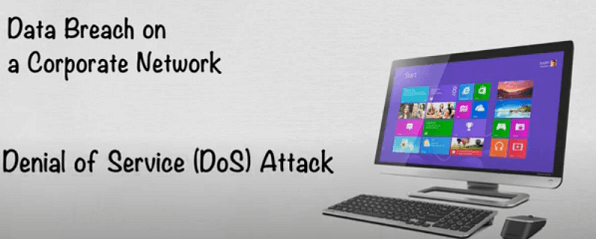Cybercrime and its impact on computer technology. To effectively combat this threat, it is important to understand the different types of cybercrime. From phishing attacks that trick users into divulging sensitive information to ransomware attacks that encrypt data until a ransom is paid, each type has unique challenges.

In today’s digital age, computer technology has become an integral part of our daily lives, revolutionizing the way we work, communicate and access information. However, with increasing reliance on technology comes a dark age in cybercrime. Cybercrime refers to illegal activities over the Internet or through computer systems, which cause harm to individuals, organizations and society at large. This article sheds light on the concept of cybercrime, explores its different types, and discusses precautions to protect against these digital threats. digital threats.
Cybercrime and its impact on computer technology
What is cybercrime?
.
Cybercrime includes a wide range of illegal activities carried out using computer technology or the Internet. These crimes are often financially motivated but can also include actions aimed at causing harm, stealing sensitive data, or compromising digital security. Some common examples of cybercrimes include:
Forgery: Cybercriminals impersonate legal entities to trick individuals into revealing personal or financial information.
Ransomware is a type of malicious software that encrypts a victim’s data and demands a ransom for its release. This means that until the ransom is paid, the victim’s files are locked and inaccessible.
Identity Theft: Criminals steal personal information to commit fraud, open accounts, or make unauthorized transactions. Distributed denial of service (DDoS) attacks: Attackers overwhelm a target’s online services, making them inaccessible to users.
Distributed denial of service (DDoS) attacks: Attackers overwhelm a target’s online services, making them inaccessible to users.
Malware: Malicious software infects computers, compromising their performance and security. Cyberbullying: Online harassment, intimidation, or threats directed at individuals or groups.
Cyberbullying: Online harassment, intimidation, or threats directed at individuals or groups.
Data Breaches: Unauthorized access to sensitive data, often for the purpose of selling it on the dark web

Social Impact of Cybercrime
The societal impact of cybercrime extends beyond individual victims and organizations. Its impact on society is widespread and varied. aired.
Financial loss: Cyber attacks result in substantial financial loss to individuals and businesses. The costs associated with stolen funds, ransom payments, and system and data recovery can be crippling.
Invasion of privacy: Cybercrimes invade personal privacy, leaving individuals feeling vulnerable and exposed. This erodes trust in online interactions and services.
Emotional and psychological tools: Victims of cyberbullying and online harassment experience emotional distress and anxiety, sometimes leading to serious psychological consequences.
Reputational damage: Data breaches can cause reputational damage to individuals and organizations, which erodes the trust of customers and partners.
National Security Threats: Cyber attacks on critical infrastructure or government agencies can threaten national security.

Prevention and mitigation
To combat the growing threat of cybercrime, individuals and organizations should take proactive steps:
Cybersecurity Education: Promote cybersecurity awareness and education to help people recognize and avoid cyber threats.
Strong passwords and multi-factor authentication: Encourage the use of complex, unique passwords, and multi-factor authentication to keep online accounts secure.
Regular updates and patch management: Keep software, operating systems, and antivirus programs up to date to patch vulnerabilities.
Firewalls and antivirus software: Use strong security tools to detect and block malware and unauthorized access.
Data encryption: Encrypt sensitive data to protect it from unauthorized access even if it has been compromised.
Incident Response Plans: Developing and implementing incident response plans to mitigate the impact of cyber-attacks and facilitate recovery.
Collaboration: Foster collaboration between individuals, organizations and law enforcement agencies to effectively combat threat intelligence and cybercrime.
Result
Cybercrime is a serious and evolving threat that affects individuals, businesses, and society at large. Understanding the types of cybercrimes and taking precautionary measures is essential to protect against these digital threats. By being vigilant, by investing and seeing it
